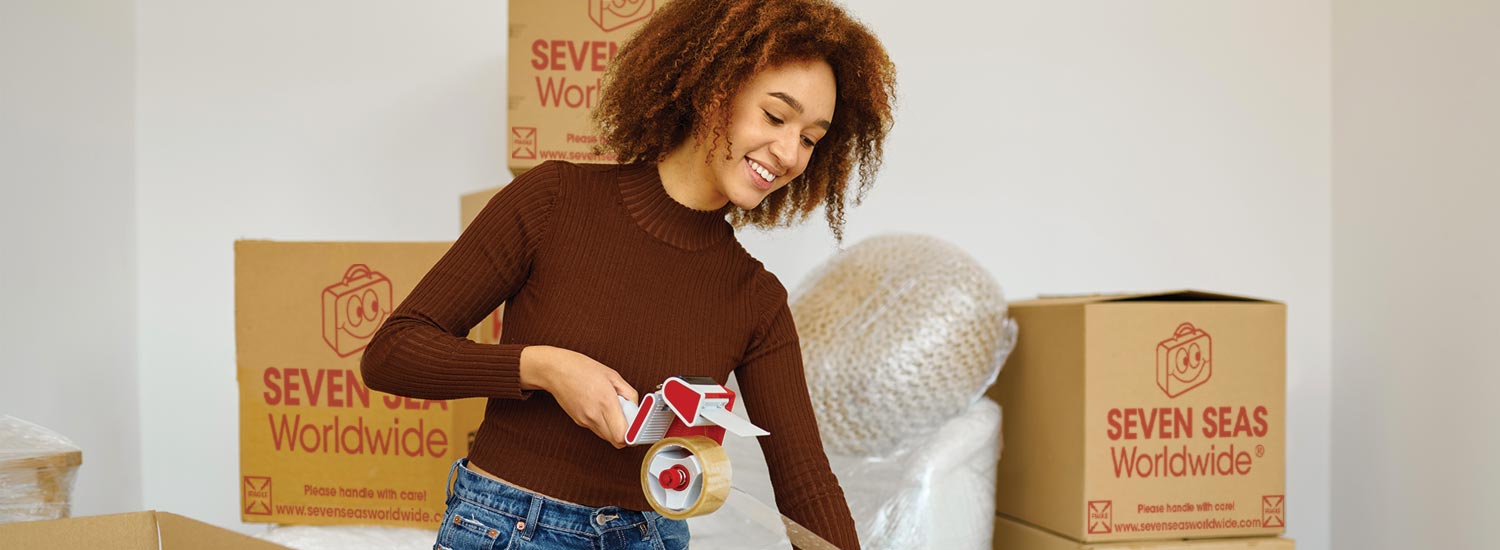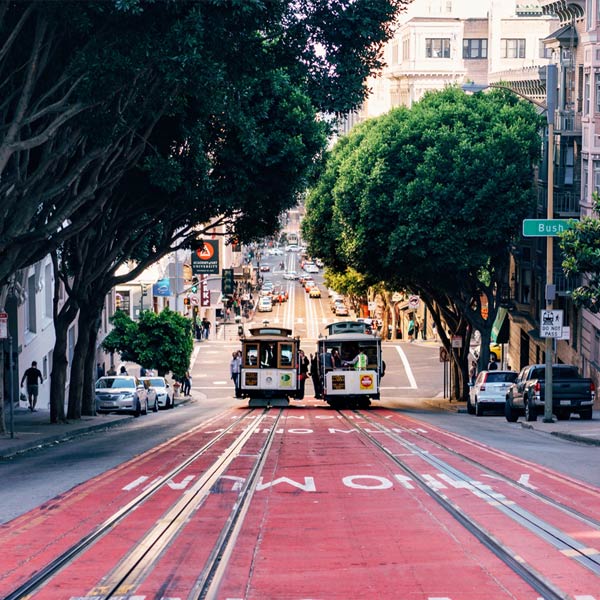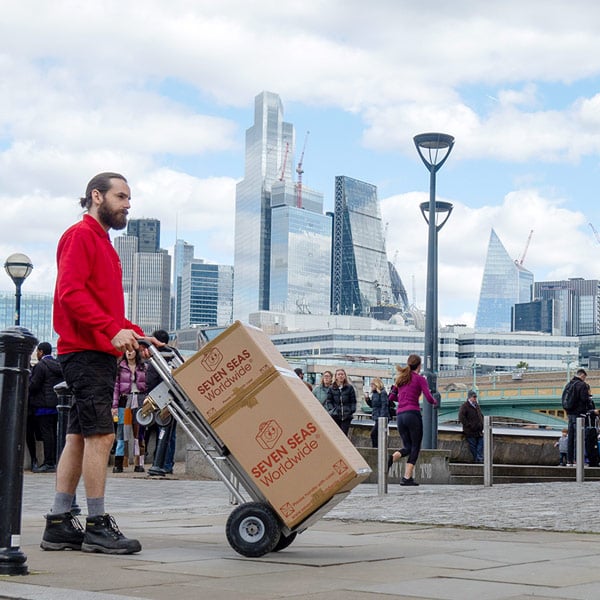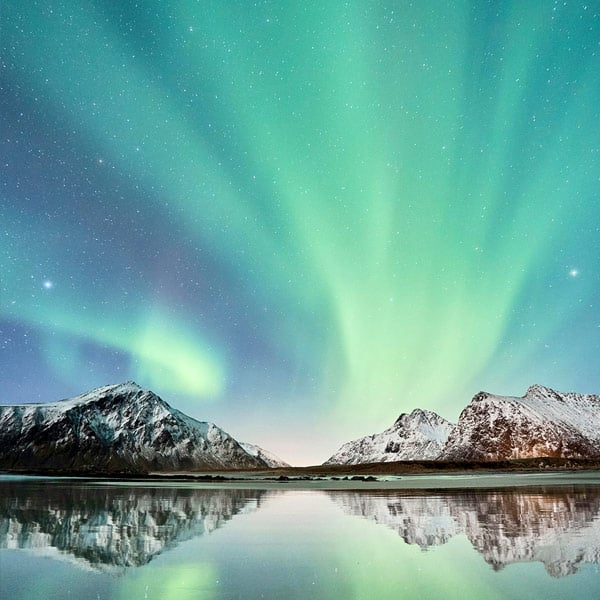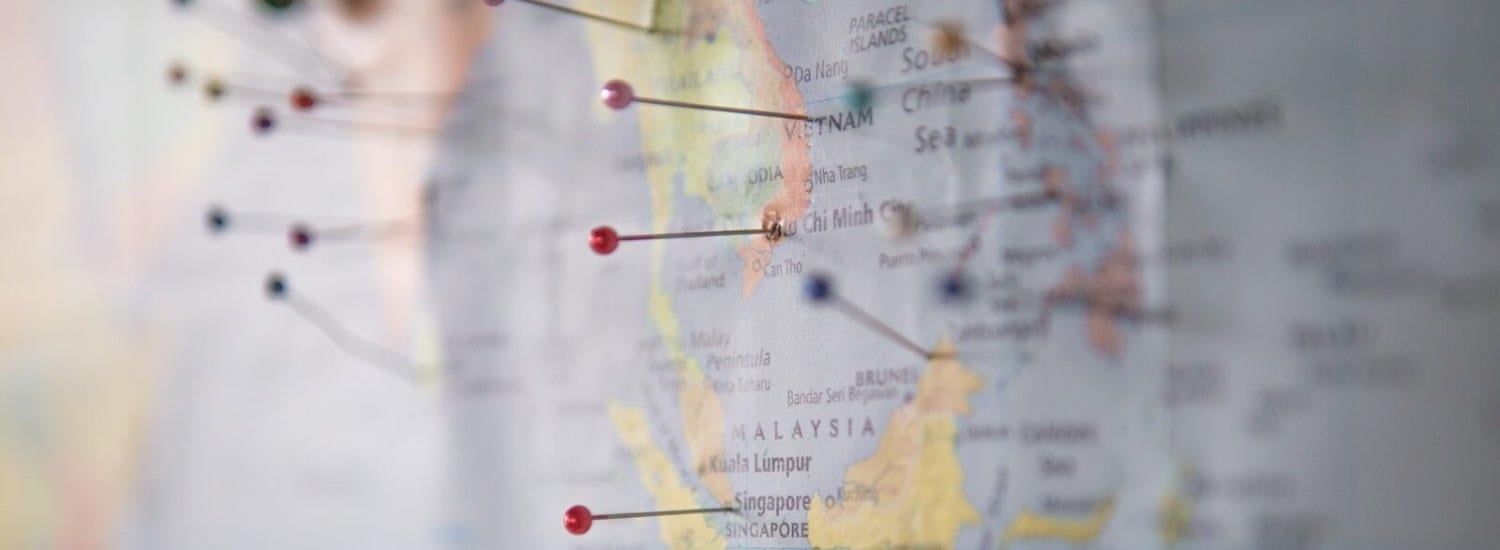Before packing, check this list of items prohibited from entering a particular country or region.
Key takeaways
- Blue zones are regions where people have a longer life expectancy than the rest of the world. The term was popularised by explorer and author Dan Buettner in 2004.
- There are five blue zones: Okinawa (Japan), Ikaria (Greece), Loma Linda (USA), Sardinia (Italy), and Nicoya (Costa Rica).
- People in blue zone countries live longer due to strong family ties, a healthy diet, regular exercise, and respectful treatment of elders.
What are blue zones?
Blue zones are regions spanning four continents where people have a longer life expectancy than the rest of the world, including a higher concentration of centenarians, individuals who live to be 100 years old or older.
This non-scientific term was popularised by National Geographic explorer and author Dan Buettner in 2004, who established five locations as "blue zones" in his book The Blue Zones: Lessons for Living Longer from the People Who've Lived the Longest.
Quick links
What are blue zones? | Blue zone countries | 9 blue zone traits
Interestingly, research conducted by the National Institute of Health found that genetics only plays a 20–30% role in longevity.
How many blue zones are there?
There are five blue zones worldwide, these are:
- Okinawa, Japan
- Ikaria, Greece
- Loma Linda, California, USA
- Sardinia, Italy
- Nicoya, Costa Rica
The term "blue zones" arose when Buettner and his colleagues used a blue pen to draw circles on a map around locations with long-lived populations.
Interestingly, research conducted by the National Institute of Health found that genetics only plays a 20–30% role in longevity.
Instead, Buettner's team identified several other contributing factors to living into old age, including diet (mostly plant-based), regular exercise, maintaining strong social connections, a sense of purpose, and successfully managing stress.
Buettner concludes that the key to living longer is not only trying to avoid dying but learning how to live well.

Blue zones locations
Blue zones locations are Okinawa Prefecture (Japan), Ikaria Island (Greece), Loma Linda (the USA), Sardinia (Italy) and Nicoya Peninsula (Costa Rica).
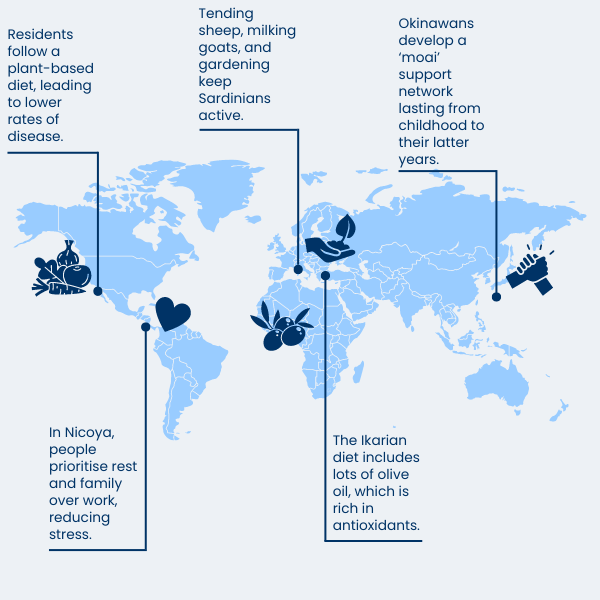
What is the healthiest country?
The healthiest country is Spain according to the Bloomberg Global Health Index. In 2019, Bloomberg compiled its list of the healthiest countries worldwide based on health risks (such as tobacco use and obesity), availability of clean water, life expectancy, malnutrition, and causes of death.
Why do people in blue zone countries live longer?
People in blue zone countries live longer due to having a greater focus on family time, a diet rich in fruit and vegetables, getting regular exercise, and treating elders respectfully.
Here's more information about each location:
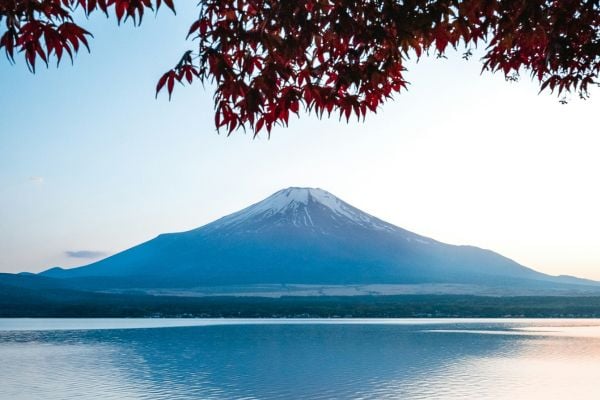
Japan blue zone:
Okinawa is an island located halfway between Taiwan and the southern coast of Japan. It boasts high lifespans, with double the number of centenarians as the rest of the country.
"Moai", the tradition of forming strong social networks among friends and neighbours, provides invaluable financial and emotional support in times of need — such bonds are formed as young as five.
Okinawans also believe in "ikigai", which means having a defined sense of purpose in life. The concept of retirement is foreign, with most people continuing to do some form of daily manual work, such as gardening, well into their later years.

Countries with highest life expectancy
The graph below shows the average life expectancy for men and women in each blue zone country according to Worldometer:
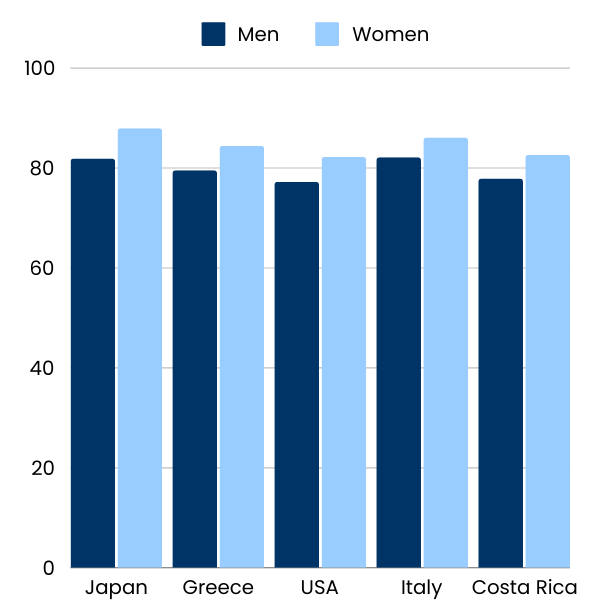
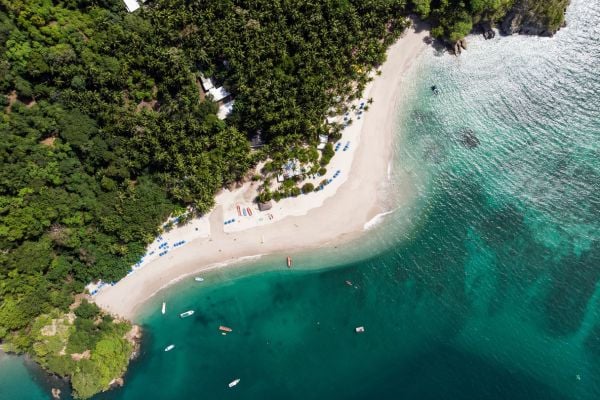
Blue zone Costa Rica:
Nicoya is a seventy-five-mile-long peninsula off Costa Rica that easily beats its North American counterparts in human longevity. Like many other "blue zone" areas, spirituality and strong family ties are regarded highly in Nicoyan culture.
"Plan de Vida", which translates as "a reason to live", encourages Nicoyan elders to maintain a positive outlook and an active lifestyle. The traditional Mesoamerican diet includes few processed foods, focusing on antioxidant-rich tropical fruit and plenty of beans, corn and squash.
Another secret to Nicoya's longevity lies in its calcium-rich water, which helps ward off heart disease and promotes strong bones.
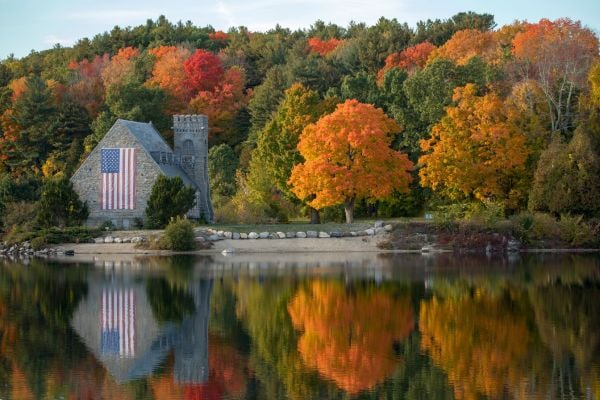
Blue zone USA:
As the only city on the list, Loma Linda, California, is unique among blue zone regions. Many point to the nine-thousand-strong Seventh-day Adventist community as why the city outlives the average American by ten years. Indeed, like other blue zone areas, Seventh-day Adventists follow a largely vegetarian diet and prioritise strong social ties.
Adventists participate in daily activities, such as long group walks, which promote low-intensity workouts and foster bonds among others.
A typical Loma Linda diet consists of roughly 33% vegetables, 27% fruits, 12% legumes and soy and 10% dairy. Meat and Poultry make up only 4%, with added sugar just 1%.
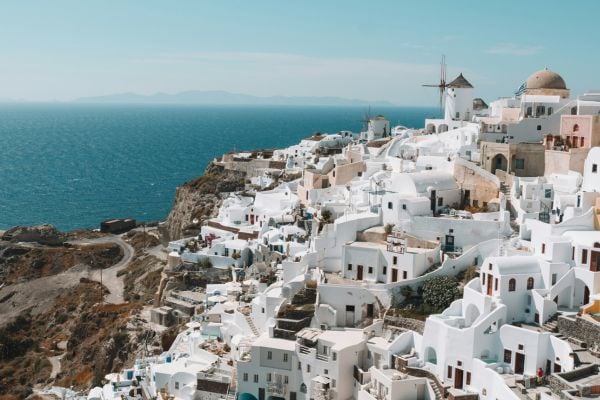
Blue zone in Greece:
Icaria is a small Greek island with less than nine thousand population. Thanks to factors such as culture, diet, lifestyle, and perspective, one out of every three residents reaches the age of ninety or more!
Ikarians' social, healthy way of life includes fun-filled, late-night games of dominoes and appreciation of the island's beautiful terrain, ideal for hiking, water sports, and cycling. The slow way of life, known as "siga-siga," helps reduce stress and boost overall well-being via midafternoon breaks and glasses of strong red wine in the evenings.
Most follow a Mediterranean diet, which includes locally sourced fruits, vegetables, whole grains, beans, potatoes, and plenty of olive oil.
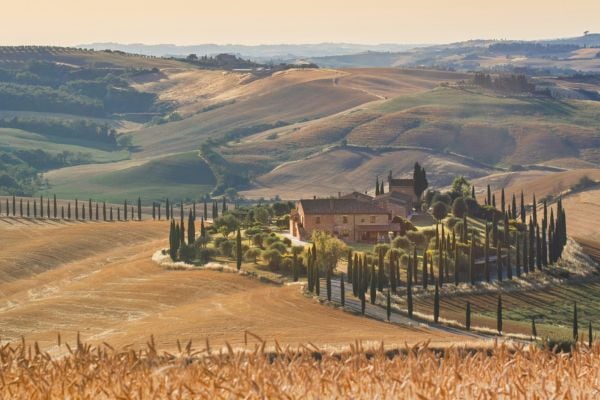
Italy blue zone:
A cluster of villages on the Italian island of Sardinia boasts the longest-living men in the world. Thanks to their isolated location, inhabitants have managed to stick to a traditional and healthy way of life for centuries.
Crucially, residents stay connected to their friends and families, lowering depression and stress. The communities socialise and drink moderate amounts of wine together, and grandparents play a role in children's upbringings, offering wisdom and support.
The Sardinian diet is almost exclusively plant-based, consisting of whole-grain bread, beans, home-grown vegetables and fruits. Meat is considered rare and is reserved for Sundays and special occasions such as Easter and Christmas.
What state do people live the longest?
The state where people live the longest is Hawaii. Residents of the popular holiday destination tend to live longer thanks to a healthy diet, laid-back beach lifestyle, and access to excellent healthcare. According to a 2022 study by the Commonwealth Fund, Hawaii ranked the highest for healthcare services out of all fifty US states.

What country has the healthiest diet?
Some countries with the healthiest diets are Japan, Spain, Greece, Italy and South Korea. However, deciding what country's diet is the best depends on the desired outcome and the criteria used.
- The Mediterranean: in countries like Greece, Italy, and Spain, people consume lots of fruits, vegetables, legumes, whole grains, nuts, and olive oil, plus a moderate and occasional selection of fish, dairy, red meat, and sugar. Studies have shown a link to numerous health benefits, including reduced heart disease and stroke risk.
- Japan: the traditional Japanese diet includes plenty of fresh fish, particularly fatty fish rich in omega-3, vegetables, tofu and seaweed. Portions are often smaller than those in Western diets, which may contribute to lower levels of obesity and related diseases.
- South Korea: traditional Korean cuisine, known as "hansik", mainly consists of tofu, rice, vegetables, small amounts of meat and fermented foods like kimchi. It's rich in saturated fats and whole grains, includes limited processed foods, and is often spicy, thanks to ingredients like gochujang, a red chilli paste.
Blue zone diet guidelines
Below is a chart showing the recommended percentages of carbohydrates, healthy fats and proteins you should have in your diet to live longer.
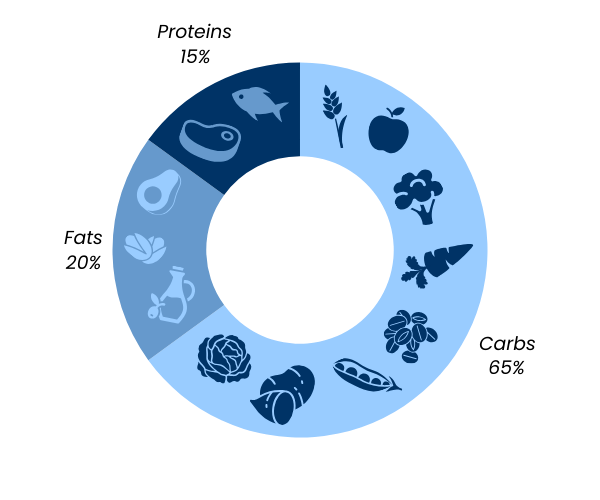
Source: Blue Zones
What are 9 common traits of blue zones?
While culturally distinct, the five blue zone regions share many common lifestyle characteristics contributing to longevity.
The following are nine traits identified by Dan Buettner and his team of researchers, known as the "Power 9":
1. Physical activity:
Natural movement is a part of daily life across all blue zones. Instead of high-stress, structured exercise like lifting weights or running marathons, residents engage in gentle but stimulating daily activities such as walking, gardening, and light manual labour.
2. Purpose:
Having a clearly defined life goal gives people motivation and direction. The Okinawans called it "ikigai," meaning "why I wake up in the morning".
3. Stress reduction:
Chronic inflammation is associated with all age-related diseases. It can be successfully reduced by lowering stress through structured days, setting aside relaxation time, and living at a slower pace.
4. Moderate calorie intake:
Blue zone residents tend to eat until they are almost full, a practice known as the 80% rule. Fasting is also prevalent, with the last meal of the day commonly in the early evening.
5. Plant-based diet:
Blue zone diets are primarily plant-based and contain various fruits, vegetables, legumes, and whole grains. Meat and fish are consumed sparingly, around five times a month, and in small quantities.
6. Moderate alcohol consumption:
Most blue zone residents drink alcohol regularly yet moderately. A common practice is one to two glasses (usually red wine) with food per day shared with friends and family.
7. Spirituality:
More than 90% of blue zone residents believe that their religious beliefs give them a sense of purpose, community, and hope, which may contribute to their overall well-being and mental health.
8. Strong family ties:
Time spent with loved ones and committing to one life partner is common. From newborns to great-grandparents, typical blue zone centenarians reside in homes that span multiple generations or live nearby.
9. Social engagement:
Maintaining close-knit communities is shared across all blue zone communities. Lifelong friends provide invaluable support, purpose, and a sense of belonging.
Do blue zones drink alcohol?
Blue zones have varied attitudes towards alcohol. Some regions consume moderate amounts, often in social contexts like meals with loved ones. Others abstain or drink minimally. Overall, a key characteristic is moderation, and in areas where alcohol is consumed, it's typically part of a balanced lifestyle alongside a healthy diet and exercise.
